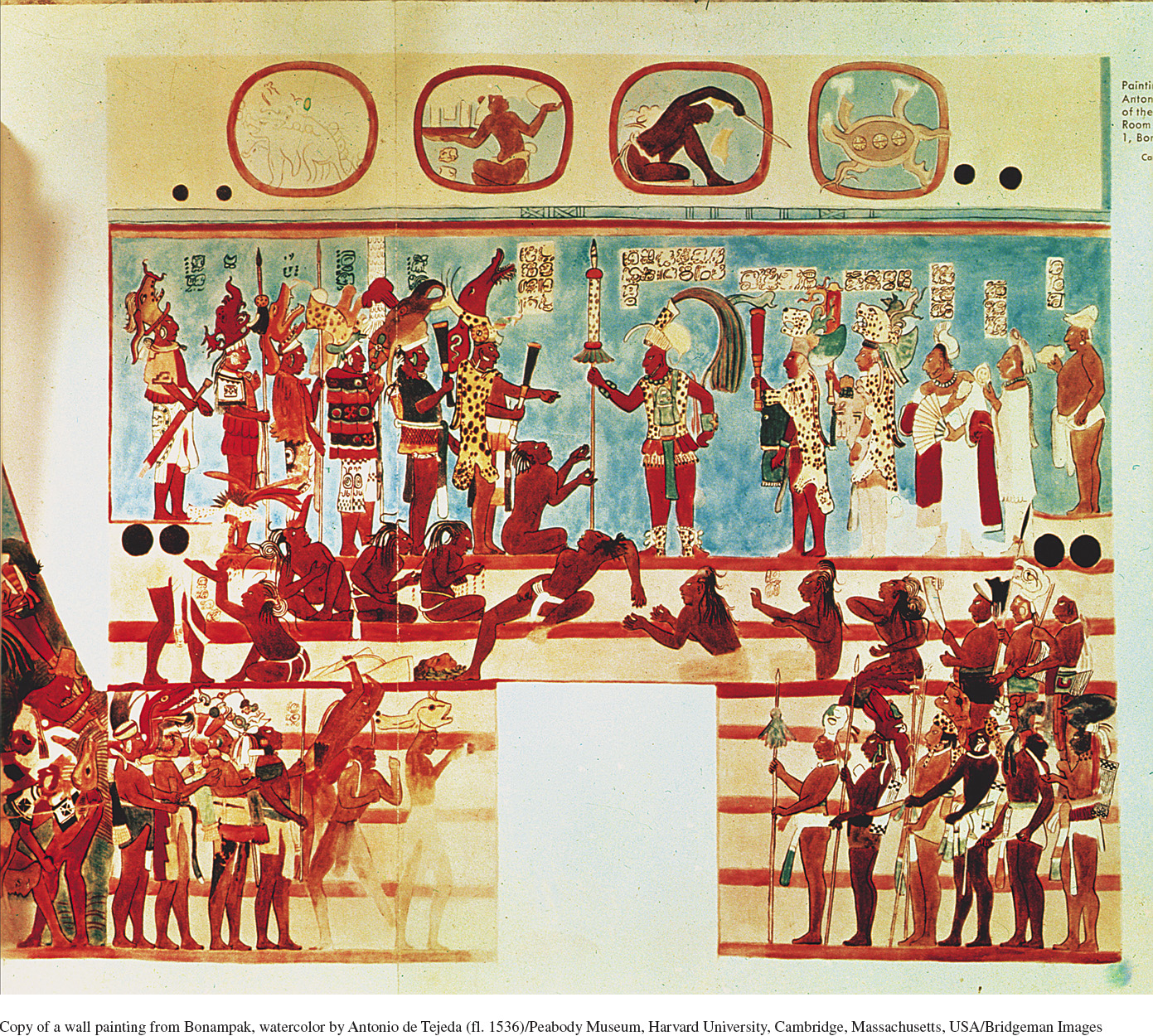Source 6.2
The Presentation of Captives
Warfare was frequent among Maya cities and thus a common theme in court art. Fought with spear throwers, lances, clubs, axes, swords, and shields, Maya wars were depicted as chaotic affairs aimed at the capture of individual prisoners, who were destined for sacrifice or slavery. These prisoners were often named in the glyphs that accompanied the portrayal of battles along with the inscription “He is seized/roped.”
Source 6.2, a reconstructed image, comes from a Maya archeological site in southern Mexico called Bonampak (BOHN-
The prisoners hold center stage in the mural. The blood flowing from several of the captives’ fingers indicates that they are participating, almost certainly involuntarily, in a bloodletting ritual, while the prisoner on the far left is in the process of having his fingers cut or severed for the same purpose. Notice also the dead captive sprawling below the king’s staff as a severed head lies on a bed of leaves below him. The four small images at the top indicate constellations, showing the favorable configuration of the sky for this occasion. The turtle on the far right, for example, depicts the constellation Gemini, while the three stars on its back represent what we know as Orion’s Belt.
Questions to consider as you examine the source:
- What can you infer about Maya warfare and court practice from this mural?
- What status distinctions can you observe among the figures in the mural? Notice the jaguar skins worn by the king and three other warriors.
- What meaning might you attach to the presence of the king’s wife and mother at this event?
The Presentation of Captives
